Zapatista issues
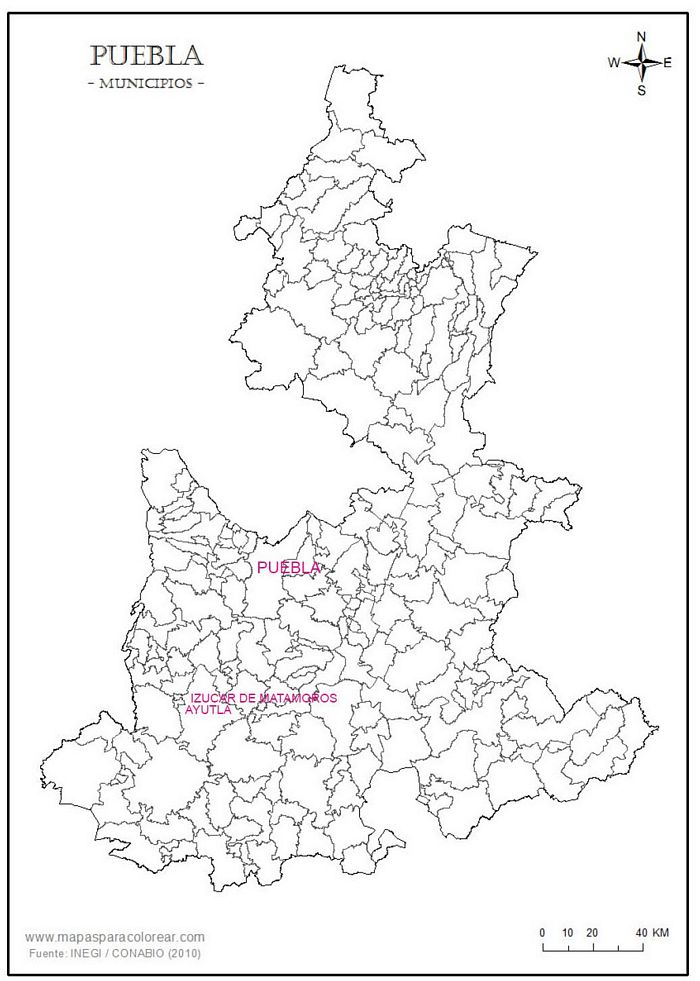 Izúcar de Matamoros
Izúcar de Matamoros
Izúcar de Matamoros is a city located in the southwestern part of the state.
La Pagaduría de la Brigada Agustín Cortés
The Pagaduría issued a series of notes (50c, $1, $2 and $5) in Izucar de Matamoros, dated 14 July 1915, and carrying the names of the General Brigadier, Agustín Cortés, and the P(agador) H. de la División, Coronel J. S. Conde. The reverse carries the legend ‘ESTE BILLETE ES DE CIRCULACION FORZOSA EN TODA LA REGION DOMINADA POR LA BRIGADA’, a perfect statement that Might is Right.
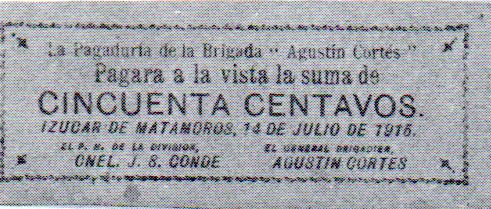 M3511 50c Brigada "Agustín Cortés"
M3511 50c Brigada "Agustín Cortés"
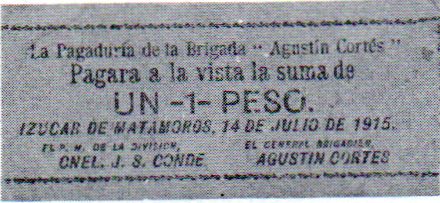 M3512 $1 Brigada "Agustín Cortés"
M3512 $1 Brigada "Agustín Cortés"
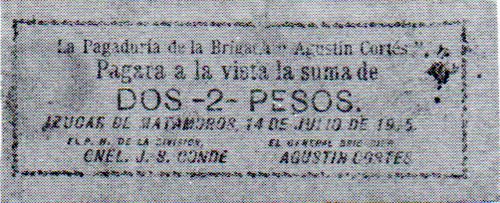 M3513 $2 Brigada "Agustín Cortés"
M3513 $2 Brigada "Agustín Cortés"

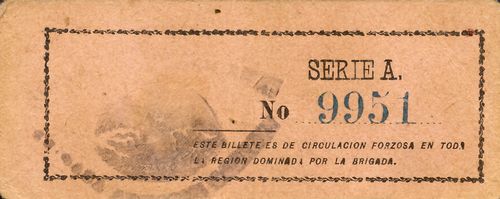 M3514 $5 Brigada "Agustín Cortés"
M3514 $5 Brigada "Agustín Cortés"
| series | to | from | total number |
total value |
||
| 50c | A | includes number 3651 | ||||
| $1 | A | includes number 3081 | ||||
| $2 | A | includes number 2707 | ||||
| $5 | A | includes numbers 1050CNBanxico #11883 to 9951 |
|
Agustín Cortés Huitzila joined the forces of the Ejército Libertador del Sur on 5 March 1911 and was made a Coronel by Zapata. He fought under the command of General de División Francisco Mendoza in Puebla and Morelos, fighting against Porfirio Diaz, Madero and then Carranza. Izúcar de Matamoros was taken by the Zapatistas for a second time on 26 April 19[ ]. On 15 November 1915 Cortés was killed in Tepeojuma during a fight with the Carrancista 6a Brigada del Oeste, under General Fernando Dávila. |
|
| J. S. Conde |
On 12 December 1915, when soldiers went to buy some peanuts in Jonacatepec, a town in the state of Morelos about 45 kilometres west of Izúcar de Matamoros, the stall-holder, Irenea Oayán refused one of these notes (un billete de Banco de Agustín Cortés) because she had no change. For some reason, a neighbouring stall-holder, Felipe Cerezo, was arrestedAGN, Fondo Emiliano Zapata, caja 10 exp 11.
Ayutla
On 24 February 1916 the Zapatista Coronel Trinidad Meléndez, of the Brigada M. Rodríguez of the División del Sur reported to General Trinidad Huitzila in Izúcar de Matamoros that in Ayutla he had issued strict orders, enforcing the local issues (billetes y cartones locales) and prohibiting the Carrancista Veracruz money (toda clase de papel monetario Veracruzano)[text needed]. However, he was being told that Huitzila himself was demanding that he was paid in Veracruz currency so wanted instructionsEl Constitucional, Puebla, Tomo I, Núm. 197, 28 May 1916. Though the Constitutionalists could cry hypocrisy, Huitzila was just acknowledging that Carrancista currency would be more useful, particularly for making purchases beyond the Zapatista heartland.
However, as Ayutla was only eight kilometres south of Izúcar de Matamoros 'billetes y cartones locales' probably referred to issues from there.
